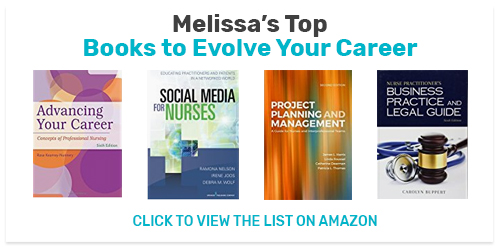Nurse Practitioner is the #2 Job in U.S. – Here’s Why

Just recently, the U.S. News and World Report announced their list of The 100 Best Jobs, identifying nurse practitioner (NP) as the #2 followed closely by nurse anesthetist at #6 and nurse midwife at #15. Are you wondering why? As a nurse practitioner myself, it’s obvious, but for everyone else, here’s why:
- Nurse practitioners are autonomous medical providers (#NPsLead)
- Job demand is high and unemployment rate is low
- The work is tough but impact is direct and meaningful
- Return on investment (ROI) is high
This article was originally written for HealtheCareers, a job search engine for healthcare providers.
Autonomy
Nurse practitioners are educated to provide medical care for patients of all ages and across all specialties. We have the opportunity to practice independently from physicians and start our own private practices. As a result, self-sufficient and ambitious individuals seek out this profession.
Today, 21 states and the District of Columbia allow NPs to practice without physician oversight, and this number is growing every year. Independent practice has reached a tipping point, with more and more state legislatures removing the outdated barriers that prevent NPs from providing healthcare services. In fact, national legislation recently passed that allows NPs to practice without mandated physicians involvement in any Veterans Affairs facility regardless of which state the facility is located.
Opportunity
Nurse practitioners are found across the entire healthcare system: hospitals, clinics, urgent care centers, pharmacies, schools, prisons, psychiatric facilities, among others. You can also find them in academia, public health, technology, health policy, executive leadership, and courtrooms. Take a minute to search open job positions, and you’ll notice the diversity and plethora of opportunities.
Demand for NPs is rising unimaginably fast. The United States Bureau of Labor Statistics projects a 31% growth rate for the NP profession compared with the average of 11% for all professions.
Furthermore, according to Fortune Magazine, nursing was the second most in-demand profession across the country in 2016. This demand will continue to increase as the nursing shortage worsens: by 2025 the country will face a shortage of 1.2 million nurses, twice the size of any nursing shortage seen previously.
Challenge
Being and becoming an NP is a challenge, a challenge that invigorates and drives its members. As Daniel Pink, author of Drive: The Surprising Truth About What Motivates Us, wrote, “Greatness and nearsightedness are incompatible. Meaningful achievement depends on lifting one’s sights and pushing toward the horizon.”
The typical route to becoming an NP involves earning a bachelor of science in nursing (4 years) and a doctor of nursing practice (3 to 4 years) degree. During this time, students undergo extensive medical and clinical education including courses in anatomy, physiology, chemistry, microbiology, nutrition, abnormal psychology, pharmacology, and pathophysiology.
Nurse practitioner school isn’t for the easily disheartened, rather it is years of book work, patient simulations, and clinical care. Those who graduate NP school must pass national board-certification exams in their medical specialty (e.g. psychiatry, pediatrics, geriatrics, etc.).
Upon graduation, NPs are prepared to face complex patient presentations, using his or her diagnostic reasoning. Nurse practitioners take detailed patient histories, conduct comprehensive physical exams, and interpret appropriate laboratory and imaging tests. Following diagnosis, NPs develop individualized treatment plans for each of their patients, including prescribing medication.
Return
In 2010, the American Association of Nurse Practitioners (AANP) conducted a study comparing nurse practitioner school costs with medical school costs. This study found that the total tuition to prepare a primary care nurse practitioner is actually less than one year of medical school tuition. While nurse practitioner school is more affordable, the care provided by primary care nurse practitioners remains equivalent to the care provided by primary care physicians.
Moreover, NPs earn competitive salaries. The most recent analysis of NP compensation found that for all types of NP, the average total income was $108,000, and the average hourly rate was $51. Average incomes varied by NP specialty with psychiatric NPs earning the highest ($132,000), followed closely by neonatal NPs ($123,000).
Also, according to the same compensation survey, 75% of NPs received paid time off, and more than half of nurse practitioners received paid professional liability insurance, continuing education reimbursement, health insurance, a retirement plan, extra paid time off for conferences, paid sick leave, life insurance, reimbursement for conference fees, and reimbursement for licensure and certification costs.
Conclusion
So, when you hear that being an NP is great, believe it! In addition to working autonomously, possessing unlimited and ample opportunity, and embracing ongoing intellectual challenges, becoming an NPs has high ROI. It’s no wonder the U.S. News and World Report chose nurse practitioner as the #2 job in the country!
Any questions or thoughts? Comment below or email me!
Share on Facebook Share on Twitter Share on Pinterest
0 Comments on "Nurse Practitioner is the #2 Job in U.S. – Here’s Why"